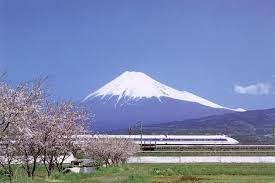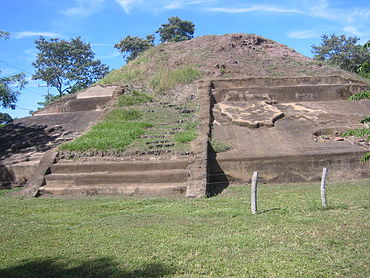
Cycling in Japan
Japan is a hidden gem when it comes to bicycle touring. The scenery, food, people, and riding of this quality are difficult to find all in one place. And while Japan may not be ideal for your first bike tour ever, it’s a very forgiving bike touring destination and has a lot more to offer than just a nice ride. Read on to start planning your next great getaway.
Climate
Because Japan stretches roughly 1,800 miles from north to south, you’ll find a wide range of climates that make bike touring possible nearly any time of year. While the far northern island of Hokkaido is getting pummeled with feet of snow, the beaches in the south are nice and warm. When summer temperatures climb high in the south, the northern reaches of the country are considerably cooler, especially as you climb into the mountains. Japan’s coastal nature means it sees a fair amount of precipitation, so rain gear and fenders are a wise choice.
Food and water
One of the best parts of riding through Japan is its ability to feel totally wild even though you’re never far from civilization. There is always a town on the horizon or an unexpected place to refuel. You might even have perfect strangers pull their cars over to offer snacks or water along your ride.
Because Japan is a very old country, it’s quite dense and well-developed. Every route will be different, but it is rare to go more than 20 or 30 miles without passing through a town of some sort. And nearly all of these towns have the savior of touring cyclists in Japan: the convenience store. These go far beyond their American counterparts: every 7-11, Lawson Station or Family Mart is clean, staffed by polite employees, and offers an extensive selection of delicacies perfect for the rider on the go. These stores also offer free Wi-Fi, water refills, maps, and more—-take full advantage
Infrastructure
The roads in Japan are very well-maintained for the most part. Do keep in mind that traffic in Japan is on the left side of the road, which can be quite an adjustment for some riders. You’re also likely to pass through quite a few tunnels on your journey, some of which can be long and a bit intimidating with traffic. Newer tunnels usually have an elevated walkway that allows for safe passage, but many older ones put you in the dark tunnel with traffic, so you may want to seek out detours. Fortunately, Google Maps street view allows you to scout these tunnels in advance for the safest route.
One of the best parts about travel in Japan is its rail system. Tired of your current scenery or running behind schedule? Use Japan Railways rail to speed up your trip. There are stations in nearly every city, making it a breeze to hop on and hop off wherever you wish. The rail system is also one of the world’s most comfortable and efficient—trains are almost always on time and cover ground quickly. And the best part? You can bring your bike onboard free of charge. There is one catch: on most trains, bikes must be stored in a bike bag to keep them contained and prevent them from making a mess on other passengers’ clothing. You can purchase reusable bags designed just for this purpose, called rinkobags, that are within the maximum size limits allowed on trains. Unless you have a folding bike, fitting your machine into a Rinko bag will likely involve removing the front wheel and rotating the handlebars 90 degrees. Because Rinko bags typically aren’t padded, you’ll also want to protect areas such as your derailleurs and chainrings with some improvised padding, and remove items such as GPS units or lights that could scratch or dent your bike frame in transit.
Another thing to be wary of is that most trains do not have a designated bicycle storage area; this means you must find an out-of-the-way spot on the train to store your bike while in transit. The best place to look is just inside each car to your left and right, where there are often gaps between the last row of seats and the wall of the train car. You may have to check a few cars before you find a spot that’s not already occupied with luggage, but rarely is a train completely full, especially outside of the major cities.
There are several trains in the Japanese rail system that cater to bicyclists with storage that does not require bike disassembly. It’s worth researching when booking your tickets to see whether one of these trains serves the route you’re planning to take.
People
One of the best things about visiting Japan is its people. By and large, they are kind and accommodating at every opportunity. Although you should always be alert and cautious when on tour, theft and violent crime in Japan are about as low as anywhere else in the world. It pays to learn Japanese words and phrases that you might need to use (“Hello,” “Goodbye,” “Thank You,” “Restroom,” “Food,” etc.) so that when someone does go out of their way to help you, you’re able to communicate your wishes more effectively.
Equipment
Whatever your standard touring setup consists of, it’s likely good enough for cycling in Japan. However, there are a few things you’ll want to make sure you have before you start rolling:
? A climbing gear - Japan can be relentlessly hilly, so it pays to have bailout gear that can get you, your bike, and your equipment over the biggest of climbs.
? A GPS device and maps - Unless you can read or speak Japanese, the road signs you encounter along your route won’t help you much. Having your route pre-loaded onto a GPS device, plus a paper map for a backup will make for easier wayfinding and less frustration.
? A Japanese phrasebook or app - basic communication with the people you encounter can enrich your experience. Basic knowledge of certain words and phrases will help communication flow a bit easier, and a supplemental guide will be worth its weight when you can’t remember how to ask where the bathroom is!
Accommodations
Lodging runs the gamut in Japan. Many touring cyclists prefer to camp, and there is no shortage of campgrounds scattered throughout the country’s backroads and small towns. Given Japan’s density, it’s also quite easy to plan your trip to end up in a town every night if you’d like a real roof over your head. Bigger towns will have western-style accommodations, but it’s worth checking out more traditional Japanese lodging if you haven’t before. Ryokan is inns with traditional tatami mat floors—these can be found in many price ranges and levels of comfort. Minshuku is akin to bed and breakfasts, with Japanese-style tatami rooms and a meal or two typically included in the price; ideal for a cyclist on the go.
Other interesting lodging options include capsule hotels, which rent “rooms” that aren't much larger than the bed—almost like sleeping in an indoor tent. Hostels are also abundant in Japan, with comfortable accommodation and occasionally food for a reasonable price. You’ll also likely meet other travelers for stories or advice. As a bonus, hostel employees can be a great resource for where to eat or what to see in any given area.
One lesser-known perk to cycling in Japan is the onsen or hot spring-fed baths. These are more common in the mountainous regions, but take one where you can get one—-there’s nothing like a soak to soothe your muscles at the end of a long day of riding. There’s a delicate etiquette to using onsen, so try to familiarize yourself with the rules before you enter.
Whether you’re an experienced world-tourer looking for your next challenge or taking your first overseas bike trip, Japan has a lot to offer touring cyclists. Safety, scenery, culture, food, and quality infrastructure make this an amazing place to ride. Add it to your list!




